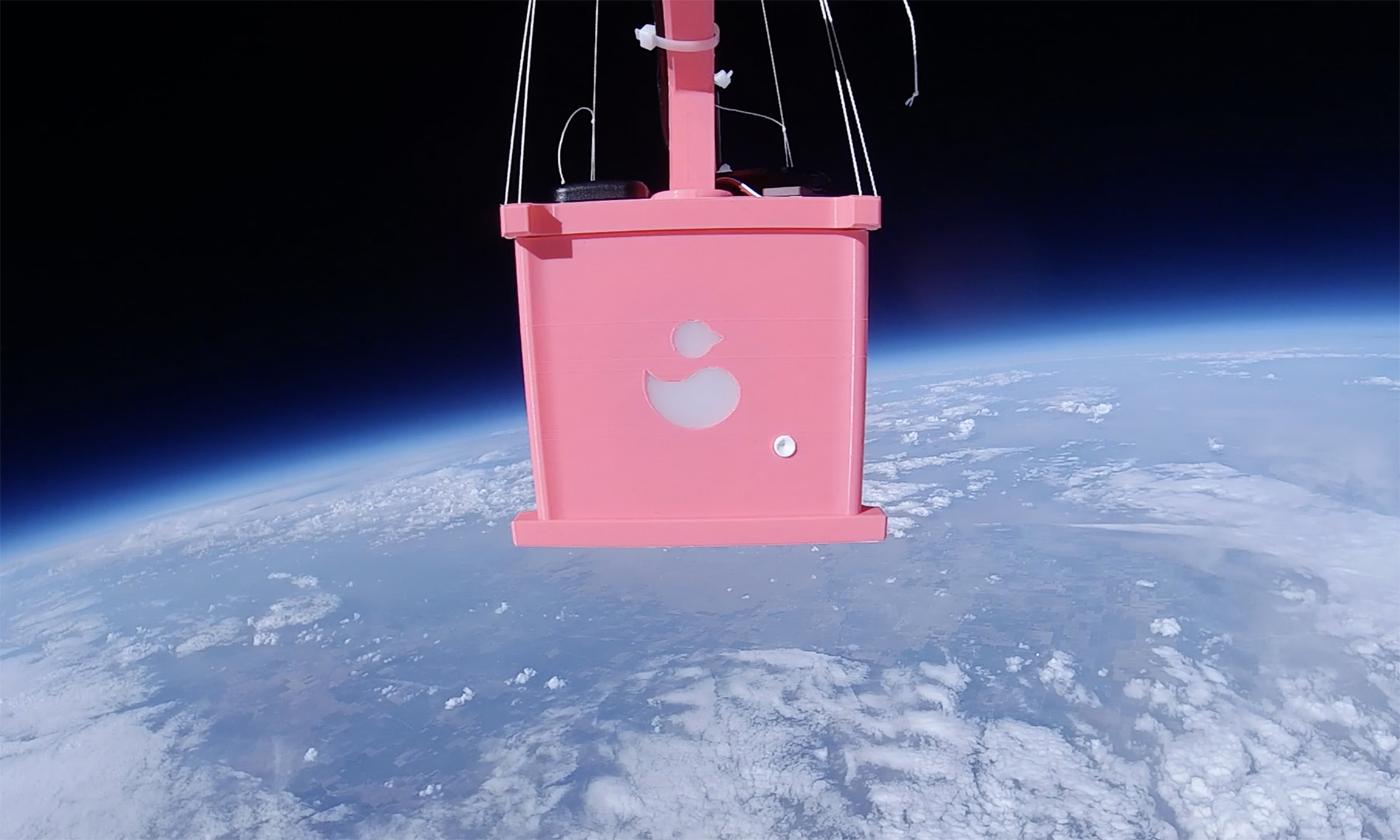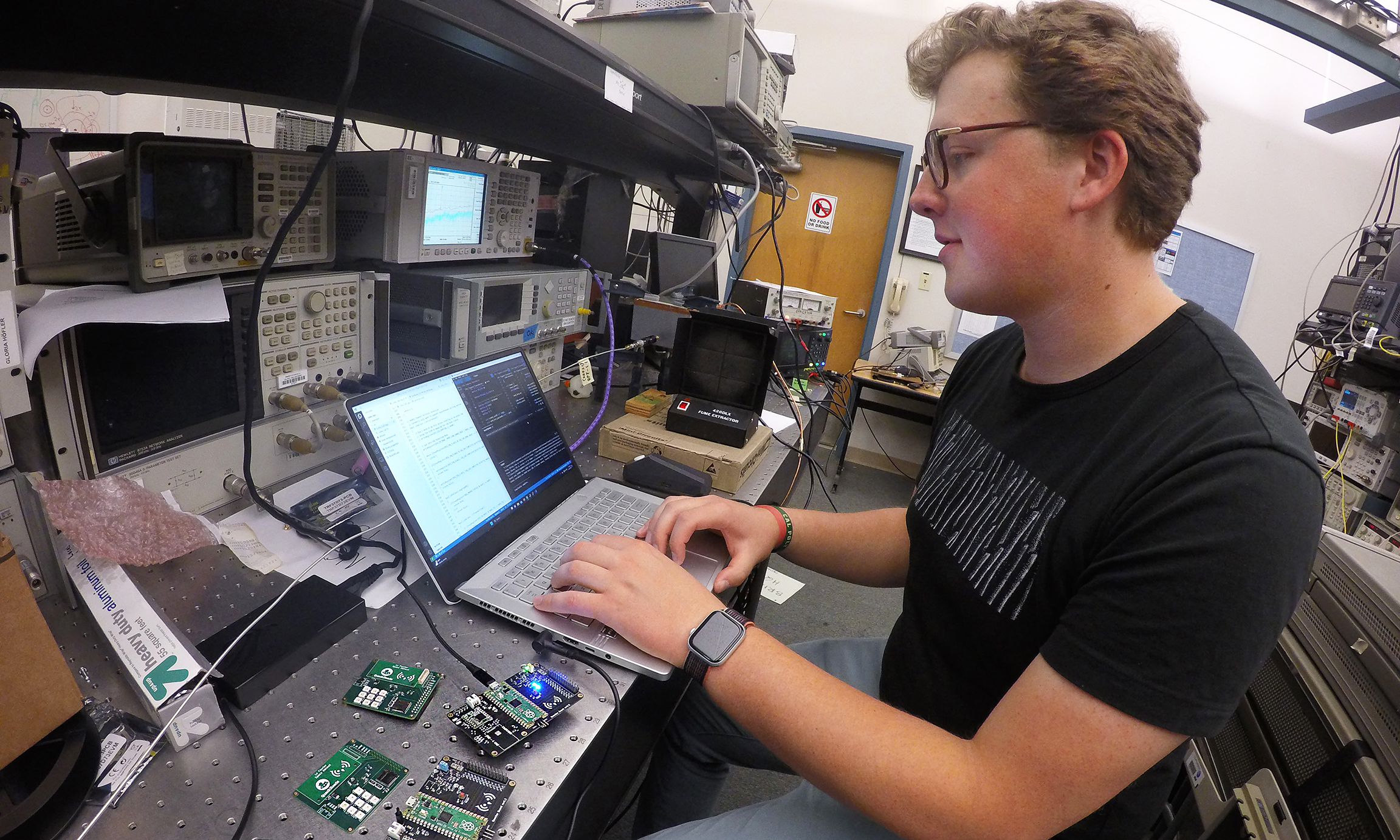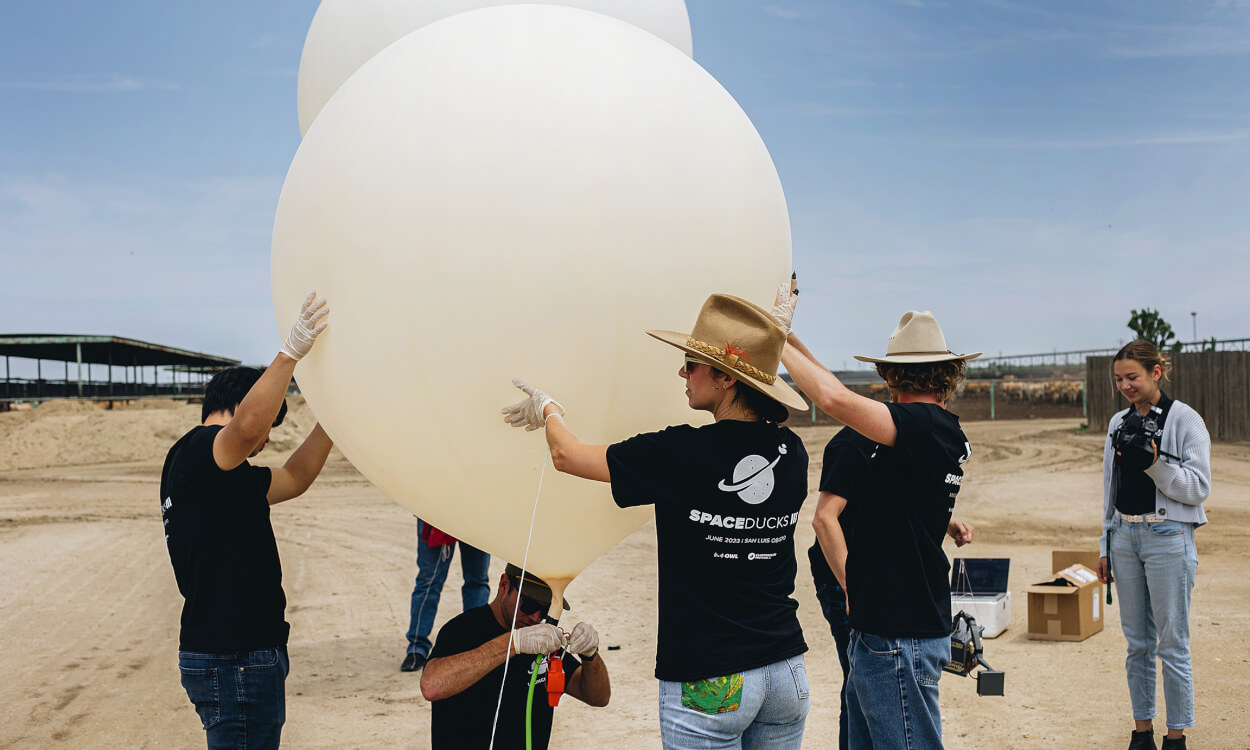Balloons carry Cal Poly engineering students’ electronic hardware designs aloft in project sponsored by emergency communications technology company OWL Integrations
Watching a small weather balloon floating up to the stratosphere may not seem to be as exciting as seeing a large rocket blast into Earth orbit, but for Kevin Nottberg, the thrill is the same — “adrenaline-inducing.”
Nottberg, an electrical engineering graduate student who worked with the Cal Poly CubeSat team as a computer engineering undergraduate, was just as happy to see the communications electronics he designed for his master’s thesis carried aloft by a weather balloon in early June as he would have been by a rocket carrying multiple CubeSats.
“The whole experience is just amazing and really energizing,” he said. “After the first few minutes when the data is coming back, you really feel that moment of, ‘Oh, my gosh, it’s working, right?’”
Nottberg, along with six other Cal Poly engineering students who were mentored by faculty advisers Dennis Derickson and Steve Dunton, worked on the SpaceDucks III project sponsored by Owl Integrations, a company that provides low-cost sensing and communications connectivity for areas hit by natural disasters.
With hardware and software developed by OWL and the Cal Poly students on board, the SpaceDucks III team launched four helium weather balloons from eastern San Luis Obispo County between June 8-11. Transmitting data the entire flight, the balloons ascended to more than 90,000 feet before popping and falling to Earth near the Carrizo Plain.

OWL Integrations CEO Bryan Knouse, who first worked with Cal Poly Engineering two years ago after being introduced to the university’s Learn by Doing education by alumna Sarah Storelli, said the four flights provided key data for the Brooklyn, New York-based company.
“The tests for SpaceDucks III greatly expanded our ability to talk between a high-altitude Duck and the ground, as well as transmit that data amongst several aerospace nodes,” Knouse said.
“That challenge was met on our first launch when we successfully transmitted at low cost and low power from the ground to SpaceDuck and to another ground station traversing nearly 30 miles up and 30 miles across.”
Nottberg, who was set to join Lockheed Martin Corp. as a software engineer in his home state of Colorado after graduation, said his part of the project for the past two years has been focused on developing custom electronics hardware dubbed a “Quacker Board” that deals with communications and security.

“My thesis is about designing and building a custom board, but in the interim, OWL wants to do these range tests and field tests on high-altitude weather balloons,” he said. “The Quacker Board is what we use to do all our communications on the balloons. The company also wants to start servicing military customers. And as part of that, we have to have a finer focus on security — so cryptographic security on the device.”
Nottberg said cybersecurity is only one of many areas of research the partnership with OWL Integrations opens for Cal Poly engineers. For example, electrical engineering students Ariel Freeman and John Gharib worked on frequency shift tolerance called the Doppler effect that can disrupt messages for devices that are moving quickly while another senior project group that included Daniel Montgomery, Lucas Lucia and Daniel Xu, looked at higher power transmitters and optimal frequency bands for the radio links.
“Because it involves truly understanding both hardware and software design, it’s been a great project,” Nottberg said.
Knouse said further collaboration between OWL Integrations and Cal Poly is a near certainty.
“It’s not a question of if SpaceDucks IV will happen, but when,” Knouse said. “And then we’ll see what incredible group of students we will have the opportunity to work with next.”
For more information on OWL Integrations, see: www.project-owl.com.
By Dennis Steers


